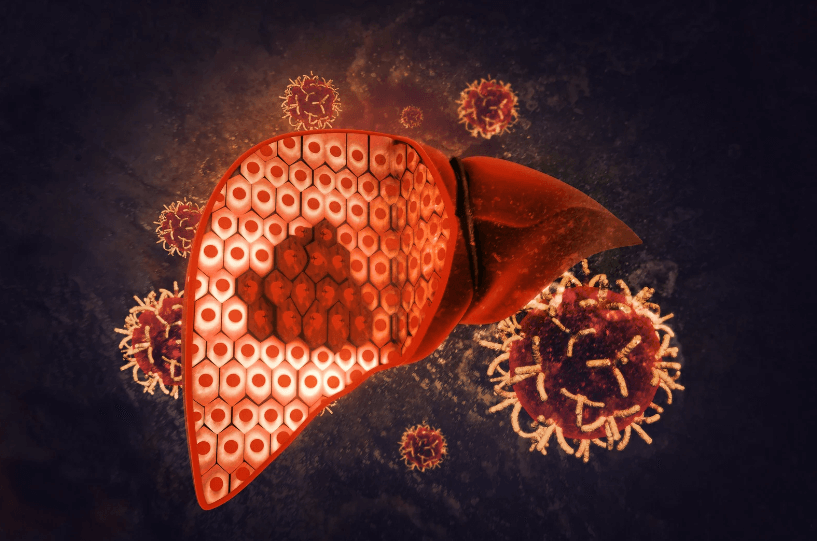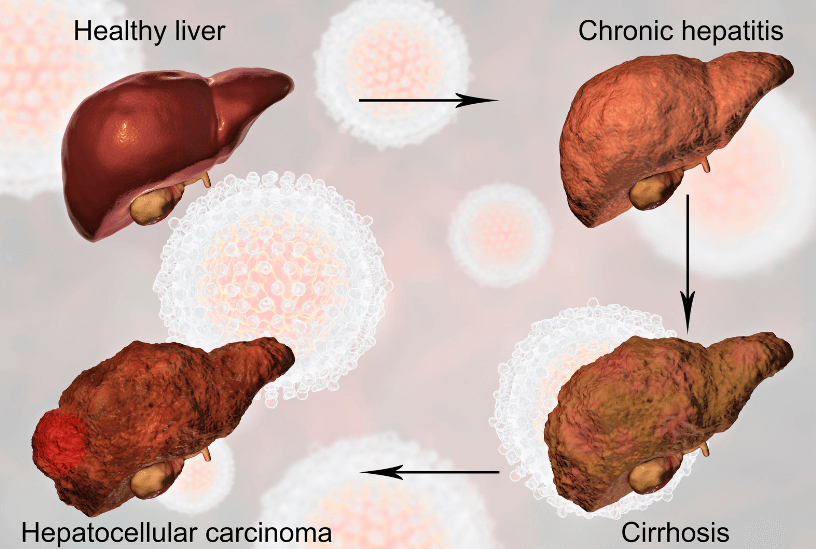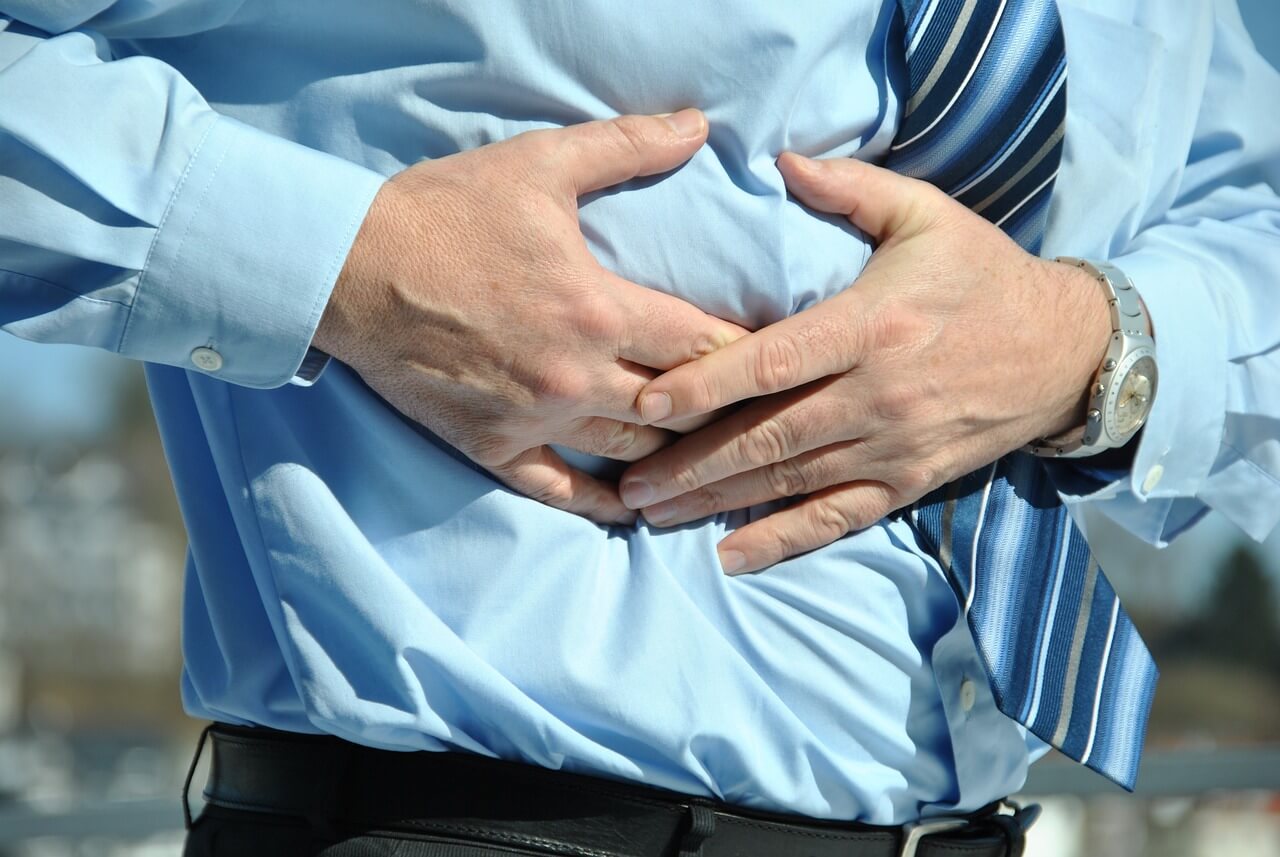Liver disease encompasses symptoms of various conditions affecting the liver’s function, such as autoimmune conditions such as hepatitis, fatty liver disease, liver cirrhosis, and liver cancer. Common symptoms include jaundice, abdominal pain, swelling, and fatigue.
- Overview
- What is Liver Disease?
Overview
What is Liver Disease?

Liver disease is any condition that causes inflammation or damage to the liver, impairing its function. The liver is a vital organ responsible for many crucial functions, including detoxifying harmful substances, producing bile to aid digestion, storing glycogen for energy, and synthesizing important proteins.
It can weigh up to 4 pounds (1.8 kilograms). The liver and healthy tissue are essential for digesting food, eliminating waste products from the body, and the blood vessels, and producing clotting factors that ensure proper blood flow, among other functions.
What are the early signs of liver problems?

The liver, a critical organ responsible for various important bodily activities, frequently operates silently and unnoticed. When the liver is in trouble, it can give out warning signs of chronic liver failure life life-threatening condition that should not be disregarded. Below are the warning signs of liver failure, the disease you shouldn’t ignore:
Bruising Easily
Because the liver is involved in blood clotting, easy bruising may be an early indicator of liver malfunction. When the liver is injured, the synthesis of these proteins decreases, in blood vessels causing you to bruise more easily or bleed for longer than normal. As liver disease progresses, this symptom can become more pronounced, making it important to seek medical advice in the early stages.
Jaundice
Jaundice is distinguished by yellowing of the skin and eyes, which indicates a bilirubin accumulation in the blood. This happens when the liver is unable to adequately handle bilirubin. Because bilirubin is eliminated through the kidneys, urine is generally black.
High bilirubin levels may be caused by inflammation, various abnormalities of the liver cells, or bile duct obstruction. Jaundice is often caused by the disintegration of a significant number of red blood cells, which can happen in infants.
Jaundice is often the initial, and occasionally the only, symptom of alcohol-related liver disease or illness. If you drink alcohol and you notice jaundice, it’s crucial to stop drinking alcohol immediately, as alcohol can exacerbate liver damage.
Dark Urine
Excess bilirubin excreted through the kidneys might cause dark urine. It might be an indication of chronic liver failure autoimmune diseases or problems.
Fatigue

Chronic fatigue and a persistent sense of exhaustion might be symptoms of liver disease. The liver plays an important role in energy metabolism, and malfunction can influence overall vitality. To support a healthy liver, consider lifestyle changes such as a balanced diet and avoiding alcohol.
Nausea
Liver disorders can cause chronic nausea. The liver’s role in digesting and bile production might be interrupted by many liver diseases, resulting in nausea and vomiting.
Itchy Skin
Itchy skin might indicate liver cancer or a bile accumulation in the circulation. Bile is a fluid produced by the liver that aids in fat digestion. When the liver suffers damage, bile can accumulate in the circulation, causing itching.
Pale Stool Color
Light-colored or pale feces may suggest a shortage of bile reaching the intestines, which fatty liver disease and issues might cause.
Abdominal Pain and Swelling
Abdominal pain or swelling may indicate liver inflammation or scarring, indicating a more advanced stage of liver disease.
Stages of Chronic Liver Disease

Chronic liver disease develops in four stages:
Stage 1: Hepatitis
Hepatitis is the first stage of chronic liver disease and the hepatitis virus is characterized by early symptoms and by liver inflammation. Various reasons, including virus infections, autoimmune hepatitis (hepatitis A, B, and C), alcohol consumption, immunological reactions, and some drugs, can induce this inflammation.
Hepatitis may not cause any symptoms, but frequent symptoms include tiredness, nausea, stomach discomfort, jaundice, and dark urine. Early detection and treatment are critical for preventing the development of liver disease to the next stage.
Stage 2: Fibrosis
As the inflammation worsens, the liver attempts to heal itself by generating fibrous tissue. This end-stage liver disease, known as fibrosis, is characterized by the production of scar tissue as a result of continuous liver injury and chronic damage.
Fibrosis is often asymptomatic, making it difficult to identify without particular tests. These studies may include blood tests to detect liver enzymes and imaging tests to determine the amount of scar tissue present, such as ultrasound or elastography.
Stage 3: Cirrhosis
Cirrhosis develops as fibrosis progresses, resulting in significant scarring. At this point, the liver’s structure has been severely changed, affecting its capacity to operate effectively and resulting in a variety of issues.
Cirrhosis symptoms include fatigue, weakness, weight loss, stomach discomfort and swelling, jaundice, itching, easy bruising, and mental disorientation. At this point, therapy focuses on controlling problems and preventing additional liver damage
Stage 4: Liver Failure
The last stage of liver disease, liver failure, is distinguished from the early stages by significant deterioration of the liver’s function. At this last stage of liver disease, the liver is unable to execute critical functions, resulting in a cascade of health concerns and the need for prompt medical intervention.
Jaundice, vomiting blood ascites (fluid buildup in the abdomen), disorientation, lethargy, coma, and internal bleeding are all symptoms of liver failure. At this stage of liver failure and kidney failure, however, treatment options may include a liver transplant, medicines, and supportive care.
Causes of Liver Diseases

There are several causes of liver disease, which include:
Excessive Alcohol Consumption
Chronic alcohol misuse can result in alcoholic liver disease, which causes inflammation, fatty liver, and, ultimately, liver, called cirrhosis.
Viral Hepatitis
Infections with the hepatitis B or C viruses can induce persistent inflammation, which can eventually lead to kidney and acute liver failure and liver damage.
Nonalcoholic fatty liver disease (NAFLD)
This is a condition in which fat accumulates in the liver. It is frequently connected with obesity, diabetes, and high cholesterol.
Hemochromatosis
This is a hereditary disorder that causes the various body fluids and immune system to absorb an excessive amount of iron. Iron may accumulate in the various blood vessels that have blood flow to the liver and cause harm.
Certain medications
Certain medicines can harm the liver if used in large dosages or for an extended length of time.
Exposure to certain toxins
Toxins, toxic substances such as chemicals or industrial solvents, can cause liver damage.
Diagnosis of Liver Problems

It is critical to consult a doctor if you are experiencing any of the warning symptoms of liver disease. Your doctor may do the following procedures:
- Get your Medical History: The first step is to compile a complete medical history that includes information regarding symptoms, risk factors, and a family history of liver disease.
- Physical Examination: A comprehensive physical examination helps healthcare providers analyze symptoms, look for indicators of the problems of the liver(such as jaundice or abdominal swelling), and assess general health.
- Blood Tests: Particularly the function of the liver tests, can offer information on liver health by assessing enzyme, protein, and bilirubin levels.
- Ultrasound, CT scans, and MRIs are imaging modalities that assist in viewing the anatomy of the liver, diagnosing anomalies, and measuring the amount damage of to the liver.
- Biopsy: A liver biopsy may be indicated in some circumstances to collect a tiny sample of liver tissue for comprehensive investigation. This can aid in the diagnosis and severity of liver disease.
- Non-Invasive Tests: Non-invasive procedures, such as elastography, detect liver stiffness and provide information on the degree of fibrosis without requiring a typical biopsy.
- Endoscopy: If problems such as esophageal varices are suspected, an endoscopy may be done to check the digestive tract.
Treatment

The treatment for liver illness will be determined by the cause of the liver failure: liver cancer or fatty liver disease. Some typical treatments to prevent liver disease include:
Lifestyle Change: Lifestyle changes may include decreasing weight, eating a balanced and healthy diet more, exercising regularly, and consuming alcohol in moderation.
Medications: A range of drugs are available to assist in treating liver disease.
Liver Transplant: A liver transplant may be required for acute liver failure in some situations.
Prevention
- Get a hepatitis B and hepatitis A vaccination.
- Consume alcohol in moderation.
- Keep a healthy weight.
- Maintain a nutritious diet.
- Exercise regularly.
The liver is essential for general health, yet it is vulnerable to harm from a variety of sources. Recognizing and acting on early warning symptoms of liver disease is critical for avoiding serious consequences and achieving the best treatment outcomes.
Liver Cancer Treatment
Liver cancer treatment options vary based on the stage and type of cancer, and may include:
- Surgery: Removal of the tumor or liver transplant.
- Ablation Therapy: Techniques like radiofrequency, microwave, or cryoablation to destroy cancer cells.
- Embolization: Blocking blood flow to the tumor.
- Radiation Therapy: High-energy beams to kill cancer cells.
- Targeted Therapy: Drugs that target specific cancer cell pathways.
- Immunotherapy: Boosting the immune system to fight cancer.
- Chemotherapy: Drugs to kill cancer cells.
For detailed information, consult a healthcare provider or visit authoritative medical sources.
Frequently asked questions
What teas are good for liver health?
Eight teas beneficial for liver health, highlighting their unique properties:
- Milk Thistle: Antioxidant and anti-inflammatory.
- Licorice: Aids detoxification.
- Dandelion Root: Promotes bile production.
- Oolong: Reduces liver fat.
- Chamomile: Anti-inflammatory.
- Nettle Leaf: Rich in nutrients.
- Turmeric: Contains curcumin, an anti-inflammatory.
- Artichoke: Supports digestion.
It also provides tips for maintaining liver health, emphasizing a balanced diet, hydration, limited alcohol intake, healthy weight, exercise, and cautious medication use.
How long does it take to reverse fatty liver?
If your fatty liver disease is due to heavy alcohol consumption, you might be able to reverse the effects in approximately 2 weeks.
What vitamins are good for liver health
Key vitamins include Vitamin E (protects liver cells), Vitamin C (supports liver function), Vitamin D (reduces liver disease risk), B vitamins (essential for healthy liver function), Vitamin A (aids in liver cell regeneration), and Vitamin K (supports protein production for healthy liver function). It emphasizes the necessity of a balanced diet and consulting healthcare providers before starting any new herbal supplements used.
Remember that living a healthy lifestyle and getting medical assistance if you notice any troubling symptoms may make a big difference in safeguarding your liver health and encouraging long-term well-being.
How Can Apples Improve Liver Health?
*This information is not intended to serve as a substitute for professional medical or dietary advice tailored to individual needs.




